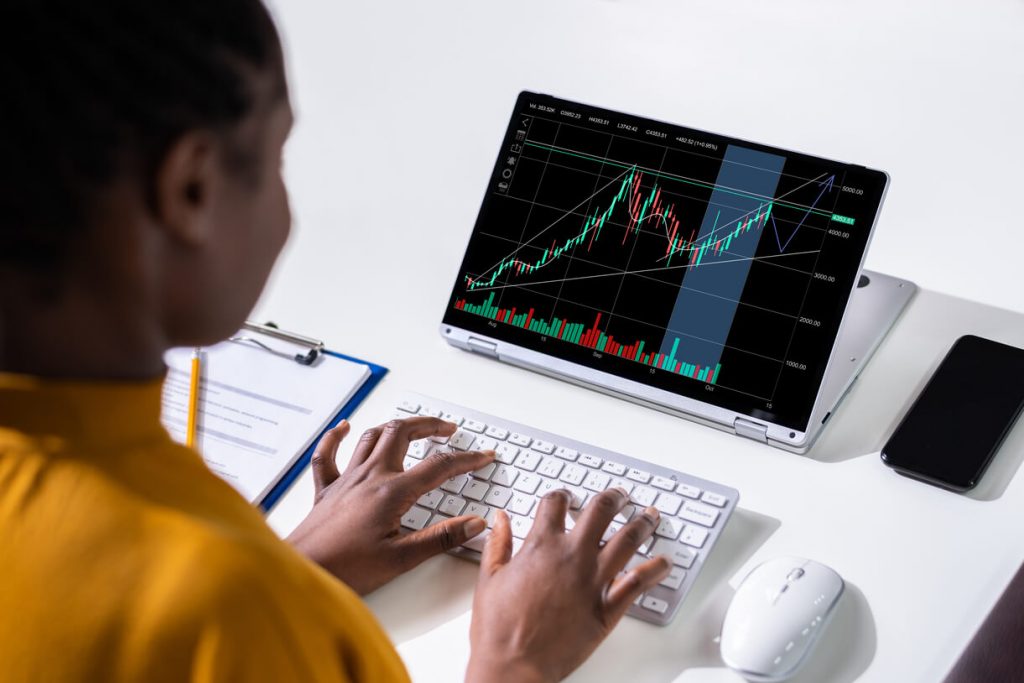More Services, More Compliance, and Competition

Exchanges expect to widen their offerings next year for both institutional and retail clients.The rise of PoS cryptoassets comes with the potential to add new services.DeFi-based services might also gain more traction, since they offer the potential for higher returns.We’re likely to see more exchanges list Web 3.0-related tokens.Exchanges disinterested in compliance may find themselves increasingly isolated.
For many people, exchanges are pretty much the core of the crypto market and industry. They facilitate the all-important trades in the world’s virtual currencies, and by doing so, they reveal which are likely to become the biggest in the future.
As such, it’s always instructive to learn what crypto exchanges have lined up for the coming months and years, if only to gain an early insight into what crypto will sooner or later look like. And according to exchanges speaking with Cryptonews.com, the world’s trading platforms plan to roll out a range of new services in 2022, from staking and DeFi to NFTs and derivatives.
At the same time, exchanges will also increasingly need to make themselves compliant with the regulations that emerge next year, as well as make themselves more accessible to a growing audience. However, most are confident that 2022 and subsequent years present an enormous opportunity for them and the wider industry.
New services, more comprehensive features
Exchanges expect to widen their offerings next year, in order to accommodate the fact that crypto continues to evolve rapidly. This is basically what also happened this year, but trading platforms expect to ramp things up even further in 2022.
Oleksandr Lutskevych, the CEO and founder of CEX.IO says that the company will build on its growth this year by offering more services tailored to businesses and institutions, which potentially represent a bigger opportunity than retail.
“Debuting in February, Prime Liquidity is our institutional liquidity solution, serving asset managers, family offices, hedge funds, OTC (over-the-counter) desks, and banks. Over time, we’ll continue expanding the suite of enterprise-grade products,” he told Cryptonews.com.
While looking at adding further business-to-business services, this and other exchanges will also focus on bringing consumer services to its platform.
“For example, in 2022 we plan to roll out the CEX.IO Debit Card, which will further enable consumers to apply their crypto holdings to everyday purchases,” he said.
Likewise, Bybit head of communications Igneus Terrenus affirms that the exchange will be aiming to widen its range of products in 2022, from new airdrops to expanding its Wallet 3.0’s compatibility with assets.
“In the next few months, we will be rolling out ETH and BTC options, and more popular tokens will be made available in USDC perpetuals […] We will be expanding our margin offerings, grid trading and institutional services,” he told Cryptonews.com.
One other service we’ll increasingly see more of in 2022 is staking, with many trading platforms likely to offer staking services for compatible coins to their users. This will be heightened by the fact that Ethereum is expected to transition to a proof-of-stake (PoS) consensus mechanism in 2022.
“The rise of PoS cryptocurrencies comes with the potential to add new services and attract more customers, bringing solutions to the masses that are otherwise too technical and inaccessible for the average consumer. This dynamic will be a catalyst for growth moving into 2022,” said Oleksandr Lutskevych.
Basically, as we saw in 2021, exchanges will continue listing new coins, launchnig new trading services (margin, derivatives, options), as well as new consumer products (cards, payments). Not only will this help them keep up with the ever-changing world of crypto, but it might also help them see off rivals in the emergent fintech sector.
DeFi, NFTs, and Web 3.0
Another 2021 exchange trend that will be continued into 2022 is DeFi, with centralized exchanges looking once again to head off the challenge from decentralized alternatives such as Uniswap.
“Analysts at Gartner predict that decentralized finance will be eligible for enterprise adoption next year, pending clarity on regulatory guidance. If so, it follows that traditional, centralized financial institutions could embrace maturing applications, integrating them with blended CeDeFi offerings,” said Lutskevych.
He also anticipates that, as customers gain confidence, DeFi-based services will gain more traction, since they offer the potential for higher returns (with commensurate risks).
“Given these circumstances, we anticipate that DeFi /CeDeFi sectors will see a heightened level of consumer interest in 2022,” the CEO said.
For Igneus Terrenus, DeFi could revolutionize the crypto-based and legacy financial systems alike, something which will make it incumbent upon exchanges to adapt.
“Some 30% of the people in the world have no access to the banking system, and the much more dire situations in developing countries are often overlooked. DeFi significantly lowers the barrier to entry for the average person, removes the physical restrictions and offers an alternative for the underbanked to take out loans without a credit score and leverage collaterals,” he said.
Related to DeFi is the emergent area of Web 3.0, where DeFi and NFT capabilities are harnessed by new internet-based applications, platforms, and sites.
“For trading platforms, this means competing in areas including Web 3.0 capabilities for DeFi and more sophisticated institutional integrations,” said Terrenus.
At the very least, we’re likely to see more exchanges list Web 3.0-related tokens, which have already begun soaring (e.g. PARSIQ (PRQ), Handshake (HNS), and NEAR Protocol (NEAR)) this year.
More regulation and compliance
With 2021 being one of crypto’s best years on record, we’re likely to see new cryptoasset laws and regulations finally being introduced in many of the world’s most developed nations. This means exchanges will spend much of 2022 ensuring their compliance with new regimes.
“We’re currently seeing national governments become more active in the drafting of crypto legislation. These bills are forcing market participants to satisfy requirements related to tax reporting, follow regulations against money laundering, adopt truthful, transparent marketing messaging, etc.,” said Oleksandr Lutskevych.
While some of the rules are rather strict, he affirms that they will protect investors and establish a legal framework for businesses and consumers to work together. And for exchanges, they will ultimately help them grow.
“In addition, these regulations establish rules of engagement and a path for market participants to further integrate into global economic activity. Exchanges disinterested in compliance may find themselves increasingly isolated, with difficulties connecting to the fiat world,” he added.
However, before clear regulations arrive exchanges will need to actively engage with regulators in 2022, to ensure that new rules and guidelines are balanced.
“Meaningful dialogues have to happen between regulators and participants, including crypto exchanges and their customers. And if this could happen in the next year, that would be good news for any exchange that truly means business,” said Igneus Terrenus.
In the long run, sensible regulations are necessary and constructive for addressing the growing pains of a booming industry, Terrenus acknowledges, so he anticipates that exchanges will increasingly work with regulators next year to make them a reality.
Challenges and opportunities
One of the things that exchanges will increasingly work on in 2022 is ensuring the ability of their platforms to accommodate rising demand and traffic. This is an issue we saw repeatedly in 2021, with even the likes of Coinbase and Binance (two of the biggest exchanges in the world) suffering repeated outages. (Learn more: Crypto Exchanges Scale, But Outages Likely To Remain A Fact Of Life)
Meanwhile, Bybit plans to provide its platform with upgrades in 2022.
“We are taking another step up from a system that currently boasts self-recovery within seconds and negligible downtime in 2021,” Terrenus said.
2022 will also magnify another exchange trend evident in 2021: competition with the growing hordes of fintech apps and platforms. Exchanges will be increasingly looking to compete with them, especially if other fintechs follow PayPal’s lead in rolling out cryptocurrency services.
“Adding to regulatory challenges are the ascent of digital payment systems, like Venmo and PayPal, that are beginning to feature crypto-related services. While these platforms are limited in the coins and services they offer, they are multinational with tens of millions of combined users,” said Lutskevych.
However, while the entry of multinational fintech corporations will provide crypto exchanges with a big challenge, they will also present an opportunity, if these new customers start looking for more sophisticated trading products at crypto exchanges. ____Learn more: – 2022 Crypto Regulation Trends: Focus on DeFi, Stablecoins, NFTs, and More- Crypto Investment Trends in 2022: Brace for More Institutions and Meme Manias
– Crypto Adoption in 2022: What to Expect?- Altcoins in for a Bumper 2022 as Number of Crypto Traders Set to Double – Report
– ‘Time Has Come to Embrace Crypto,’ Says South Korea Stock Exchange Chief- Crypto.com To Boost US Presence With a USD 216M Deal
– WazirX to Launch Non-Custodial Exchange, Expects Institutional Rush- Binance Releases Bill of Rights for Crypto Users















